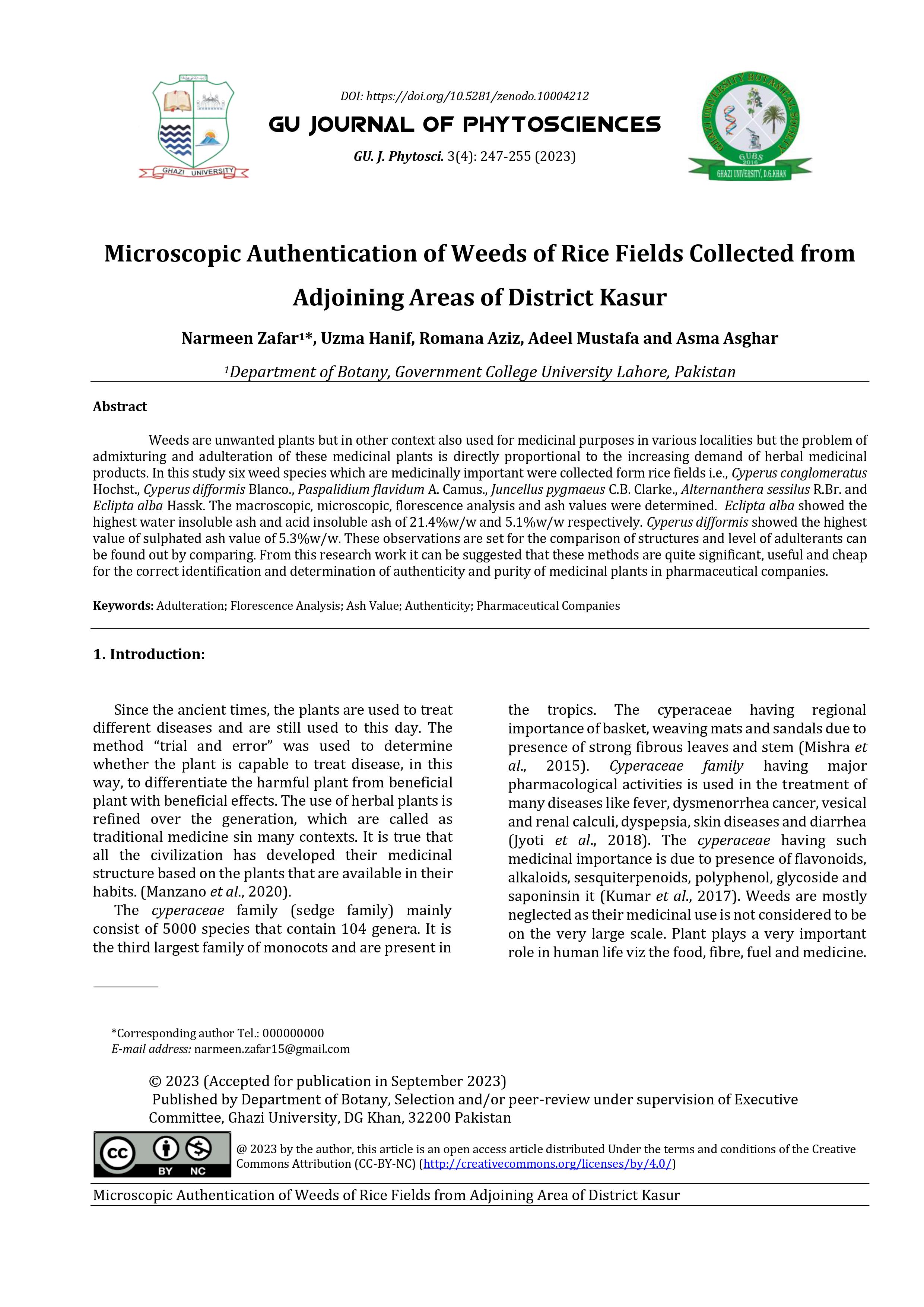Microscopic Authentication of Weeds of Rice Fields Collected from Adjoining Areas of District Kasur
Keywords:
Adulteration, Florescence Analysis, Ash Value , Authenticity, Pharmaceutical CompaniesAbstract
Weeds are unwanted plants but in other context also used for medicinal purposes in various localities but the problem of admixturing and adulteration of these medicinal plants is directly proportional to the increasing demand of herbal medicinal products. In this study six weed species which are medicinally important were collected form rice fields i.e., Cyperus conglomeratus Hochst., Cyperus difformis Blanco., Paspalidium flavidum A. Camus., Juncellus pygmaeus C.B. Clarke., Alternanthera sessilus R.Br. and Eclipta alba Hassk. The macroscopic, microscopic, florescence analysis and ash values were determined. Eclipta alba showed the highest water insoluble ash and acid insoluble ash of 21.4%w/w and 5.1%w/w respectively. Cyperus difformis showed the highest value of sulphated ash value of 5.3%w/w. These observations are set for the comparison of structures and level of adulterants can be found out by comparing. From this research work it can be suggested that these methods are quite significant, useful and cheap for the correct identification and determination of authenticity and purity of medicinal plants in pharmaceutical companies.

Downloads
Published
How to Cite
Issue
Section
License
Copyright (c) 2023 The Authors

This work is licensed under a Creative Commons Attribution-NonCommercial 4.0 International License.
All works published by the GU Journal of Phytosciences are freely available to copy, distribute, transmit, and adapt the work provided the original work and source are appropriately cited under a CC BY-NC 4.0 International License. The CC BY-NC licence allows for maximum re-use of open-access materials, and the author has full copyright over their publication. Under this license, users are free to share (copy, distribute, and transmit) and adapt for any purpose, but not for any commercial use (read full legal code).
Under Creative Commons, authors retain copyright in their articles.



